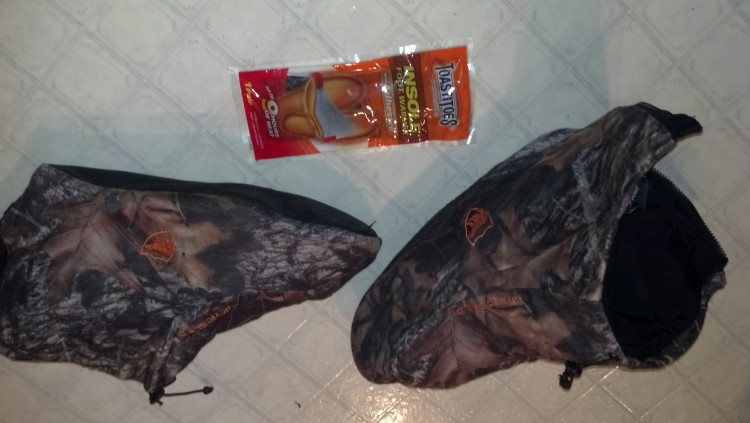Category: Hunting Blog
Coyote Trapping And Predator Removal
Deer season officially closed for the GrowingDeer Team yesterday. Although we’re a little bummed, we’re dealing with our grief by preparing for next season. It’s never too early to prepare for future seasons, and one way we’re doing that is by removing predators!
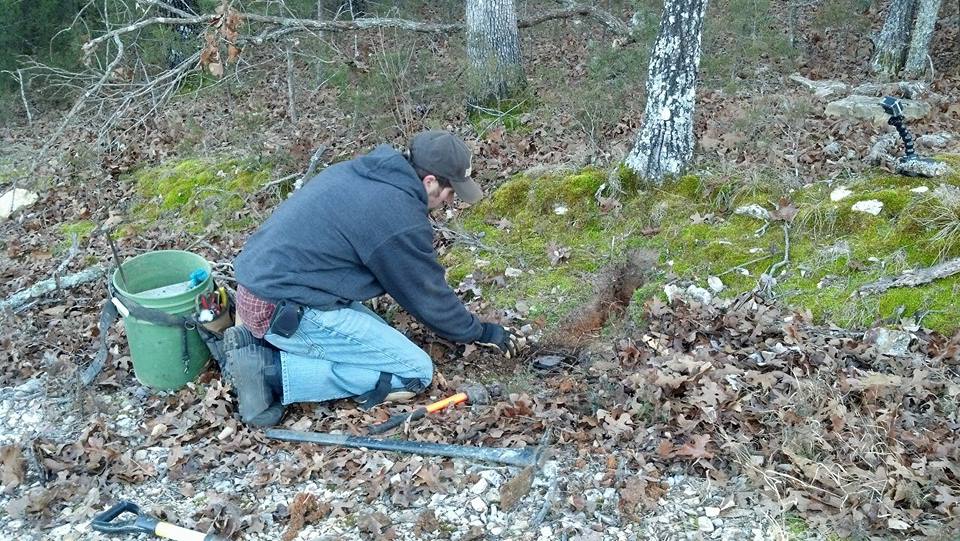
Clint Cary makes a dirt hole set on the side of an interior road. These are great places to set traps for coyotes!
Predator control is a huge piece of our wildlife management program. Coyotes can be very tough on deer herds this time of year. With the whitetail breeding season over, a lot of deer are worn down and weak from the rut and are now dealing with the winter elements. The constant presence of coyotes can raise stress levels on the deer and even lead to death. Injured deer will be easy targets for coyotes to take down as well. All of these factors motivate us to set out our Duke #4 coyote traps!
We use two different styles when trapping coyotes, the dirt hole set and the flat set. These styles of coyote trapping have proven successful for us over the years and we’re hoping they help out our deer herd significantly again this year! To learn more about these techniques watch the upcoming episodes on GrowingDeer.tv!
Being a successful deer manager isn’t putting out a couple food plots every fall. It’s a year round task that includes predator removal! Get out this winter and do your part in balancing the predator/prey relationship!
Daydreaming of Whitetails,
Adam
The Late Season And Food Sources
Hunting during the late season and having success comes down to one thing: knowing the food source.
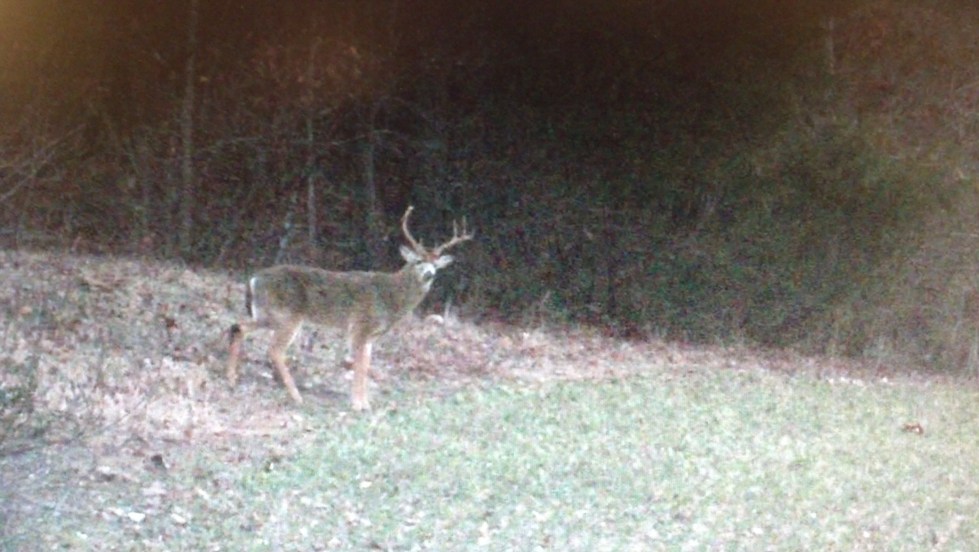
In the final minutes of light, Two Face stepped into the field but stayed just out of range.
Hunters can spend time near the bedding areas in travel corridors and still have success, but a majority of the successful hunters during the late season are spending their time near a food source. This might be a standing soybean field, cut corn, standing corn, or even a brassicas field. There are numerous things that could be the late season food source, and it is up to you to find it. Once the food source is discovered, it can lead to some phenomenal hunting!
Here at The Proving Grounds, the temperatures have plummeted into the teens and as low as zero degrees with wind chills reaching below zero. It’s brutal out there! With temperatures this cold it means that finding food is life or death for a deer. Good news for them, we have provided several acres of standing soybeans and Eagle Seed Broadside blend. The deer have certainly found these plots and are making regular trips to them in the evenings. This is where we’ve located ourselves with hopes of tagging a late season buck. We came close recently when Two Face came within ninety yards of our Redneck Blind. It was a great encounter and we couldn’t be more excited to get back in that blind with the next north wind.
Finding the food during the late season can mean the difference between success or failure.
Daydreaming of Whitetails,
Adam
Cold Feet, The Downfall Of Any Hunt
It’s happened to anyone who’s ever spent time chasing late season whitetails. Once cold weather has set in, attention, preparation, and anticipation can all but be thrown away as the new focus becomes keeping your feet warm! Below are the steps Grant and I use to avoid cold feet so we can stay alert in the tree stand!
Last week I shared some tips on how we stay warm in a deer stand and avoid those hunts where the only goal is to get warm! Our late season tactics to stay warm don’t end there; keeping your feet warm is challenge all in itself! Here are the steps we use:
- Don’t Sweat It – It’s important to understand two things when trying to avoid sweaty feet. How long is the walk to your stand? How much can you wear to keep your feet warm on the walk in, but avoid overheating? It’s a fine line, but knowing these things can be the difference in having sweaty feet or warm comfortable feet.
- Liner Socks – This small lightweight sock needs the power to wick away moisture. This will keep your foot dry and ultimately warmer. The liner sock also allows you to place a disposable heated insole on your foot. These small, disposable, heated insoles are placed near the ball of your feet and then wrapped around the top side of your foot covering your toes.
- Wool Socks – With a liner sock and heated insole on, then slip on a thicker wool sock over them. This wool sock will keep the warmth in and around your toes. We use the Redhead Lifetime Guarantee socks.
- Boots – During the late season, wear a size or two bigger than usual. This allows your toes to move slightly keeping plenty of blood moving, and also provides enough air for the heated insoles to work correctly.
- Boot Blankets – With liner socks, heated insoles, wool socks, and warm boots we still need a way to keep the heat in. The boot blanket keeps the heat in and also cuts the wind from cooling down your boot. I was skeptical of these at first, but once I tried them I was amazed at how well they worked!
The combination of these six things will help you keep your feet warm during the late season allowing you to sit longer and be more comfortable.
Daydreaming of Whitetails,
Adam
Staying Warm In A Deer Stand
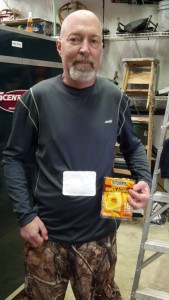
Grant attaches the HotHands body warmer in the center of his chest to keep warm on those later winter hunts.
Perched in a deer stand during the late winter months can be brutal, especially if your gear is less than equipped for the elements. Adding one small detail to your apparel can increase your comfort and your success.
During these cold winter months, it is very important to remain warm throughout your hunt. Sometimes, it seems almost impossible to stay warm and comfortable in the deer stand, but through years of perfecting our technique we’ve learned to never forget one piece of equipment. HotHands are a must for the GrowingDeer.tv team. These small, inexpensive packs are worth their weight in gold!
We use HotHands for several reasons – their heated insoles keep our feet warm, the hand warmers keep our hands warm, but most importantly we use their body warmers. The body warmers are definitely our favorite! Once we’ve put on our base layers, we attach the body warmer in the center of our chest just below our heart. Next we’ll place another body warmer in the center of our lower back. With the HotHands firmly attached to our base layer, we finish dressing and head to the stand. Staying warm throughout the hunt means you can sit longer, greatly improving your rate of success.
This small detail not only helps keep us warm but more importantly allows us to wear less clothes. In years past it was difficult trying to find the happy medium between wearing enough clothes to stay warm but not too many for fear of not being able to draw your bow back effectively. HotHands has certainly solved that problem!
If you’ve always struggled to stay warm while hunting, be sure to try this technique out!
Daydreaming of Whitetails,
Adam
Identifying A Late Season Problem
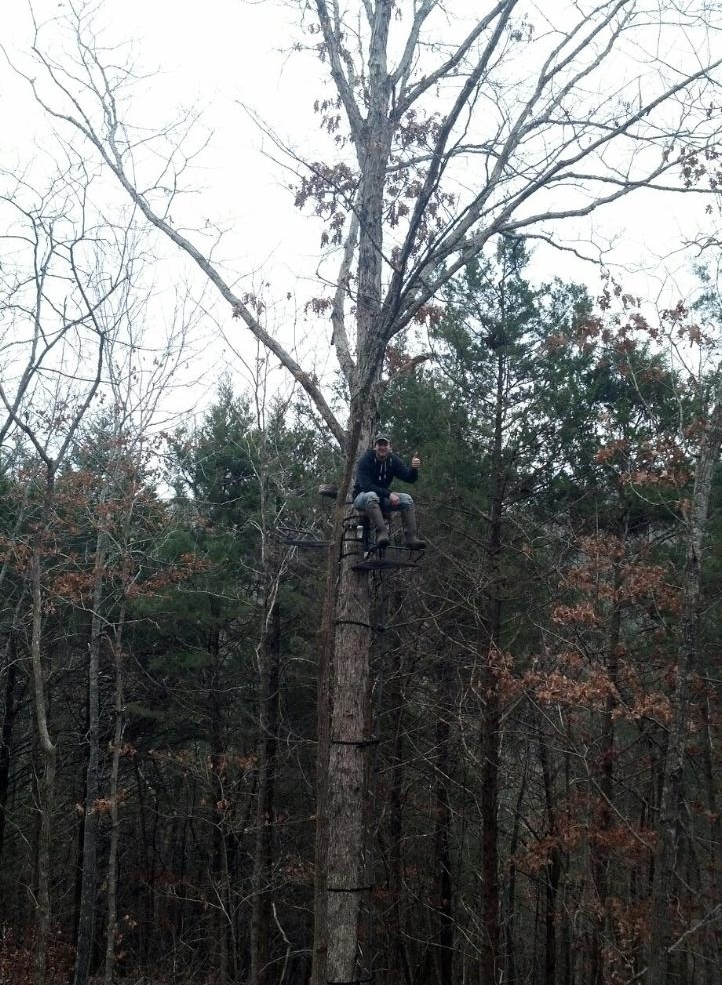
This tree stand has a great backdrop. Notice how little sunlight is directly behind the stand.
It is crunch time at The Proving Grounds. Missouri’s 10 day alternative methods season begins this weekend and there is less than a month left of archery season. Are you feeling the pressure to fill your remaining tags? This time of the year can be an exciting time to hunt but can also be a dangerous time to assume that the stands you hunted earlier in the season are still their best.
A couple of days ago, Adam and I hung two new stands. At both locations the same question came up, “What will our backdrop look like in this tree?” Because most of the leaves have fallen, it was very difficult to find a tree that we felt had enough cover to conceal us where we would not be skylined by deer.
Are you hunting a stand that you have hunted all season? Now that the leaves have fallen, you could be exposed and easy for a deer to spot. This can be devastating to a hunt. If there is nothing behind you, between you and the sky, it can be very easy for deer to pick up on your shape or the slightest movement.
Take the time to reevaluate your stands. You may need to attach branches behind your stand to help break up your figure or even move the stand. The little details can be the determining factor when you try to fill those remaining tags this season.
Managing whitetails with you,
Daniel Mallette
The Dwindling Of Two Face
Every whitetail hunter has experienced being unsuccessful and spent the off season wishing he could have changed his tactics and been more successful. However there is a silver lining, if the buck isn’t killed by natural causes or by a neighboring hunter, you will be able to watch his growth change from year to year.
During the 2010 season there was a buck at The Proving Grounds, “Last Lick Big 10.” He was a giant buck for this part of the world. He showed all the signs of being mature, but he lived on a part of the farm where cameras had just started being used so his exact age was unknown. In 2011 “Last Lick Big 10” was back, but slightly smaller than he was the year before.
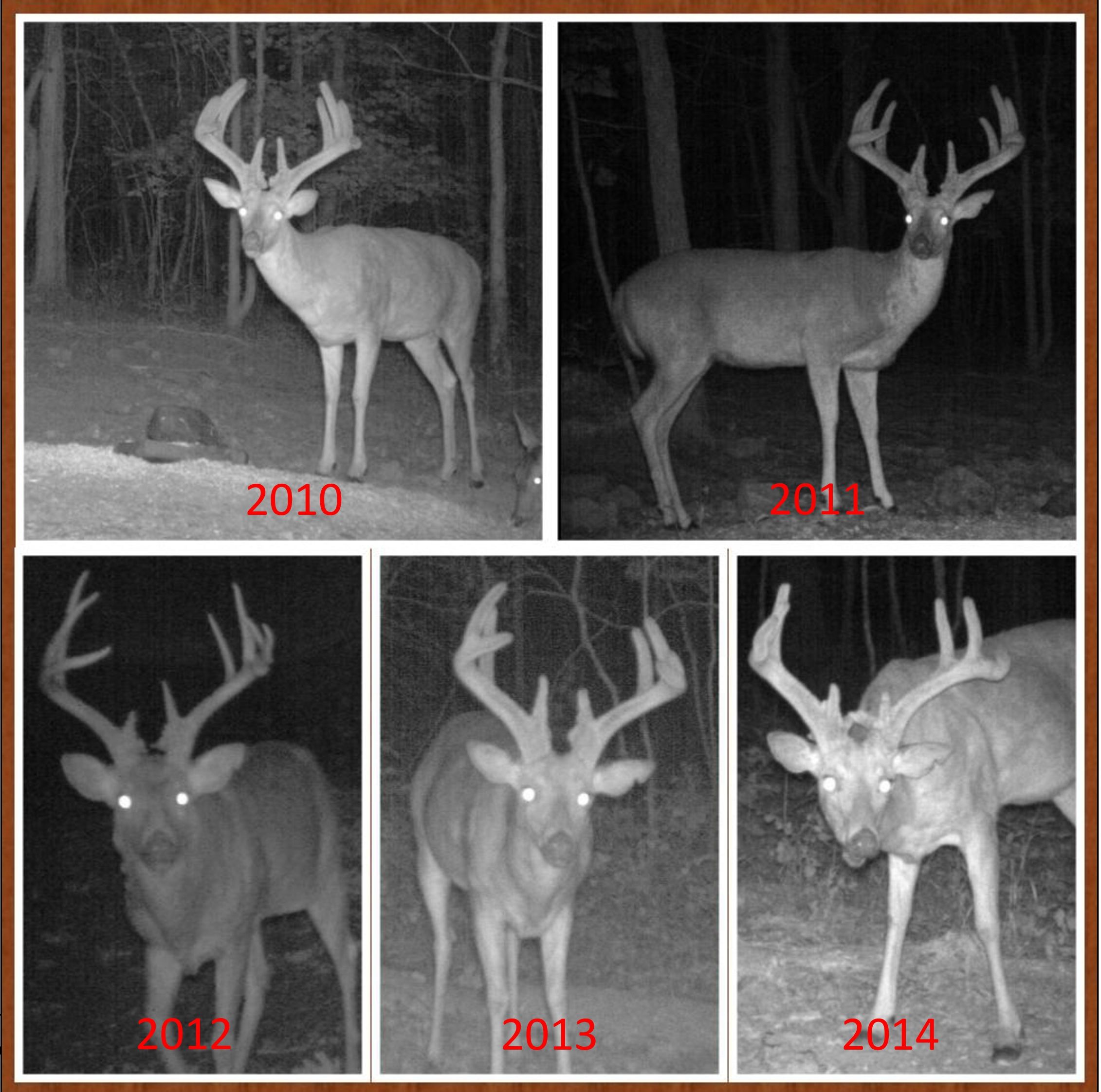
Over the last five years Two Face has lost several inches in antler but gained lots of character!
In 2012 “Last Lick Big 10” disappeared. During the middle of November we had a new buck show up that had a strange looking set of antlers. One side had five points with tines no longer than seven inches, while the other side had four points with tines nearly ten inches long. We joked that if you found his sheds you would believe it to be from different bucks, so we named him “Two Face.”
During the following year of 2013, Two Face showed up on camera as a massive ten point with kickers at the bases of both antlers. He was a cool looking buck, but what made him show more character was his light colored face. His forehead was almost white and his back had scars all over it, most likely from fighting.
During the off season this year I was looking through Reconyx cards and watched Two Face visit a Trophy Rock. He didn’t have antlers but our history is so strong I recognized him even without antlers. After years of running these hills and surviving predators and hunters, Two Face looks as old as the trees we hunt him out of. It was during this time I realized who he was. Two Face had decreased so much in antler size that at first I didn’t realize he is most likely “Last Lick Big 10.” They live in the same area; both have an ear notch in their left ear; and both have very similar antler dimensions. After studying all the photos we’re very confident they’re the same buck. That would make Two Face nine or ten years old!
Watching Two Face over the years has been bittersweet. We’ve lost many battles with him in the game of hunting, but we’ve won by getting to watch such a magnificent buck live his life at The Proving Grounds. Two Face has been a great reminder to me that it’s not always about harvesting a deer but also the pursuit and the memories made along the way.
Daydreaming of Whitetails,
Adam
Creating A Great Late Season Deer Hunt
It’s that time of the year again. The peak of the rut has passed in most parts of the country and as winter knocks at our door, the acorns have been picked through making the deer work harder searching for food. This is when winter food sources become hunting hot spots. Last week Adam shared that our hunting tactic for tagging a hit list buck is to pattern doe fawns, especially those feeding in food plots. Knowing this pattern would occur, we began making a plan this summer for late season hunting.
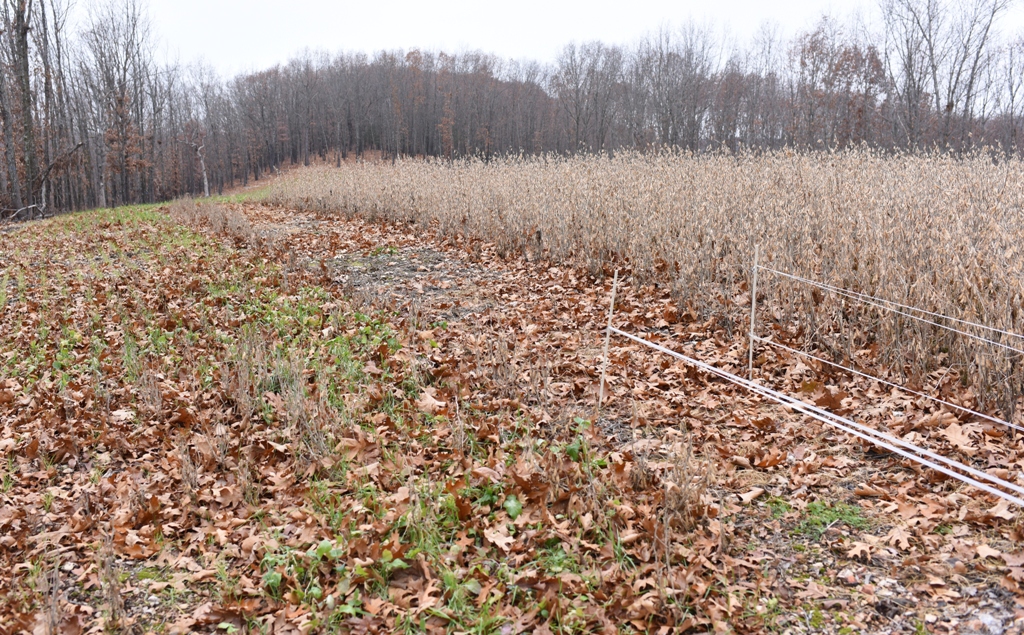
A small plot of standing soybeans opened for hungry deer.
Soon after planting, the GrowingDeer Team placed Hot Zone electric fences around several different portions of soybean plots at The Proving Grounds. The unfenced areas have experienced heavy browse, but the beans inside the fence have remained relatively untouched. This has saved a high quality food source to help the local herd through the winter months. In doing this, we have also created a great late season hunting setup.
We have recently opened small portions of the fencing at these plots, creating funnels. Like most animals deer tend to take the path of least resistance, especially when it comes to getting to the dinner table (this probably applies to us humans as well!). It won’t be long before deer figure out the subtle change and begin to pour into the standing beans. This is exciting for us because these larger fields, that were hard to hunt earlier in the year, now have smaller area for feeding which brings deer within range of our stands.
As we continue to use our Reconyx cameras, we will be watching for patterns of doe fawns that are taking advantage of the now easily accessible food, with the expectations that a mature buck could be right behind her. We look forward to the next few weeks. I hope you find the chance to get into the woods this time of the year and experience a great late season hunt.
Managing whitetails with you,
Daniel Mallette
The Second Rut: Strategies To Be Successful
Late November and early December can be a difficult time for deer hunters, but understanding deer biology can help you tag a late season buck!
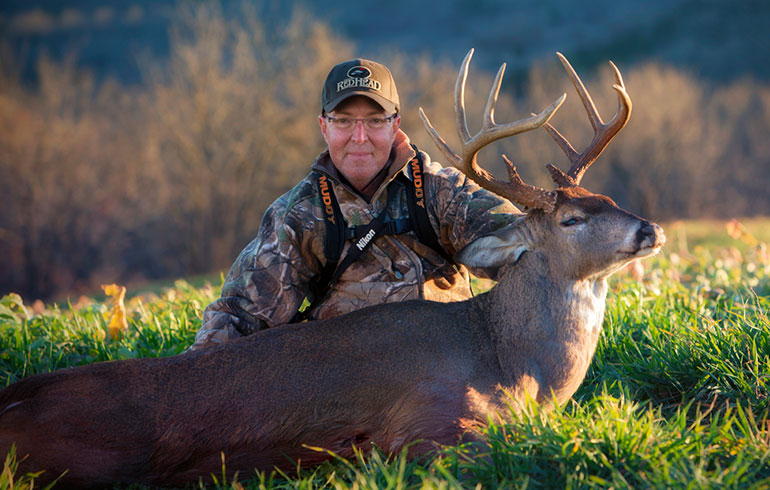
Grant poses with “The Trashman,” a mature buck that was harvested when he was following a receptive doe fawn.
Trying to pattern deer, especially mature bucks during late November and early January is tough. By this time of year the deer have usually felt a high amount of hunting pressure. We know what pressured deer do don’t we? They become nocturnal. Nocturnal deer are very hard to hunt, but lucky for us nocturnal deer will still chase receptive does, even during daylight!
Over the next couple of weeks, doe fawns will be reaching the body weights of approximately 70 pounds. When they reach this weight they will begin puberty and become receptive. Unlike a mature doe who seeks shelter upon becoming receptive, doe fawns go about their normal routine. That routine may consist of bedding in a clear cut during the day or going to a food plot an hour before dark every afternoon. If this is the case, there is a good chance a buck will make an appearance at that food plot during daylight hours.
Game Plan: With our Reconyx cameras placed over most of our food plots on time lapse mode, we will monitor the fields for daylight activity. Next, we’ll search for patterns of doe fawns frequenting the plots. Once we find the fawns, we’ll move in and hope for a mature buck to make his appearance. Grant and I had a great hunt using this same strategy a couple years back as he tagged a nice buck we called “The Trashman.”
Finding the preferred food source during the late season is one thing. Finding the preferred food source with a receptive doe fawn will most likely lead to a very exciting night in the stand. Be sure that you’re not overlooking the doe fawns in your area; they may be the lure that helps you harvest your number one hit list buck.
Daydreaming of Whitetails,
Adam
Hunting Free Ranging Whitetails: Sharing Isn’t Always Easy
Almost every hunter that steps into the woods during the fall has one buck that they dream about, lose sleep over, strategize over and fantasize over. This is the story about that buck and the day it all ended.
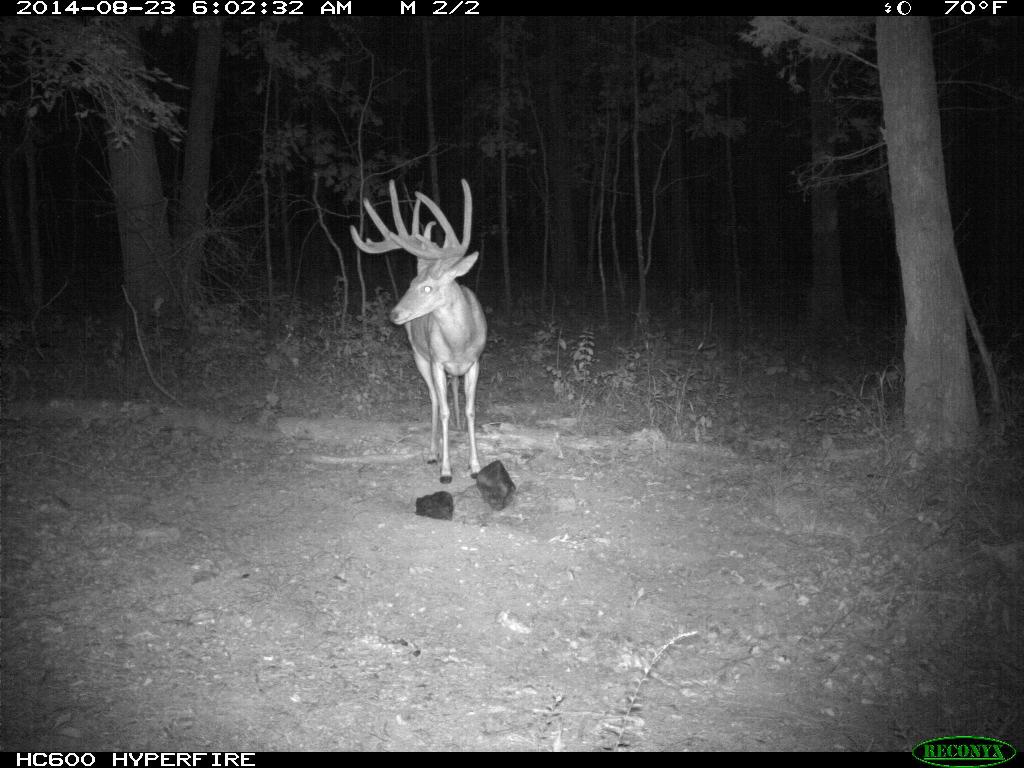
Royal George was a frequent nighttime visitor to our Trophy Rock sites.
George Alexander, also called Royal George, showed up on our Reconyx cameras last summer and immediately caught our attention. At that time he was unknown and unnamed. Hoping he would make his living on the farm, we knew he would be our prized buck. About that time the news media was obsessed with a baby in England named George Alexander. How fitting could this name be? While a majority of the world was talking about George Alexander of England, Grant and I were obsessed with George Alexander of The Proving Grounds. After looking through the Reconyx images we decided he was immature and would receive a pass for the 2013-2014 hunting season.
Fast forward to July 1st. We laid our eyes on George for the first time in 2014. One word – WOW! Here in southern Missouri where The Proving Grounds is located, it’s tough for a buck to reach over 160 inches. It certainly happens, but when a buck reaches that size he is the talk of the neighborhood. Grant and I felt that George was 4.5 years old going into this hunting season, so he was the top buck on our hit list. Knowing how hard it is to hunt nocturnal bucks, and sensing our chance for success would be slim to none, Grant and I didn’t hunt George very much. We checked our cameras constantly throughout the fall, hoping for daylight movement of George, and it never happened. As the rut started to come into full swing we hoped a hot doe would lure him out in daylight. Through all of this, there was also concern that he might venture off the property. The fourth night of Missouri firearm season Grant received news.
Grant gave me a call and told me to check my email. I scanned through pictures sent by the neighboring landowner and all our dreams of harvesting George were erased. Our neighbor had shot Royal George late that evening right under his tree. I was immediately upset and got very little sleep that night thinking about that great buck. This is an ending that every hunter has or will experience. It’s unpleasant, but it’s part of managing free ranging whitetails. Sure, it would have been great to see George at The Proving Grounds, but we’re happy for our neighbor and what he was able to accomplish. At the end of the day we need to be thankful for what we got out of the pursuit. George wasn’t poached, or hit by a vehicle, he was harvested by a landowner who was perched in a tree enjoying the evening just like you and I.
As the book closes on this great whitetail, I’m sure another buck like George will come along soon. As deer managers, we will continue to let young deer walk and improve the habitat to grow bigger deer. Congratulations to our neighbor on harvesting such an incredible whitetail!
Daydreaming of Whitetails,
Adam
Shifting Deer Hunting Strategies With The Rut
Over the past few weeks scrapes have played an important role in the GrowingDeer.tv Team‘s hunting arsenal. In a recent episode, GDTV #257, we discussed what scrapes are and how to use them for hunting the pre-rut. Even though bucks will continue to use scrapes throughout the season it will be less frequent and with no distinguishable pattern. As the first does enter estrus, bucks begin to focus on does. Scrapes are no longer the primary focus of our hunting.
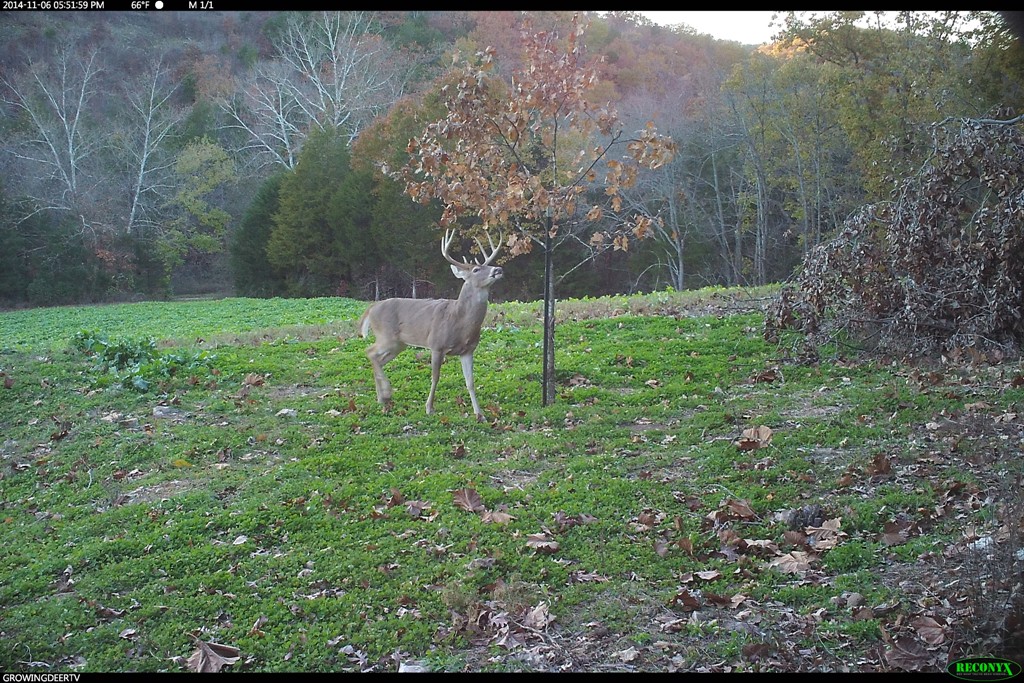
This mock scrape is at the end of a travel corridor. Bucks still check it out but it’s not as active as it was before a high percentage of the mature does in the area became receptive.
Maybe you have already observed does being chased by several small bucks followed by a larger buck. When this occurs, does get tired of constantly being pushed around and will seek out shelter. Time to shift focus and hunt stands that are near or overlooking areas of dense cover, like a thicket or a clear cut overgrown with saplings. The goal is to catch a buck searching for a doe that has or will take refuge in the cover. You can see how Grant put this strategy to use in episode #157.
In addition to hunting cover, our other preference this time of the year is travel corridors. Travel corridors are areas that deer prefer to use as they travel to their destination. These corridors tend to be paths of least resistance for deer and usually allow deer to move in relation to the wind. We know that does will be using these areas and that bucks will follow.
We also know that now is the prime time. As every day passes more does will become receptive. This means bucks will not have to look as hard for a date, and buck movement will decrease. When that happens, it will be time to shift hunting strategies once again!
I hope you get the opportunity to experience this exciting time of the season.
Managing whitetails with you,
Daniel Mallette



